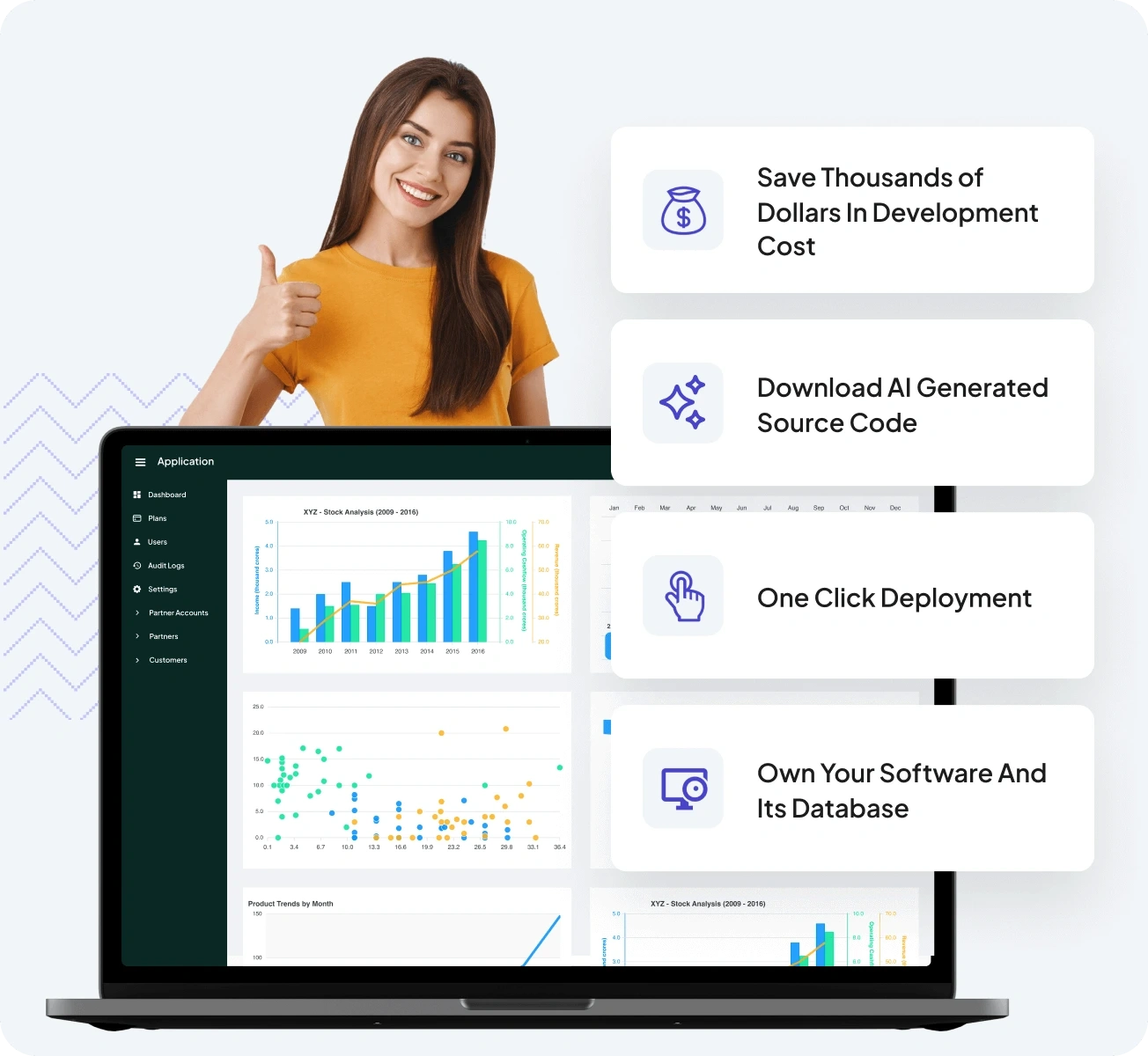
In an era where speed, scalability, and innovation determine success, software development must evolve to keep up with modern demands. Businesses can no longer afford long build cycles, heavy technical debt, and inefficient processes that slow down product delivery. FAB Builder answers this challenge with a powerful promise: over 60% optimization in development effort.
By combining intelligent automation, modular architecture, clean code generation, and visual configuration, FAB Builder empowers development teams to build applications faster, with fewer resources, and with long-term maintainability in mind.
This is not just about building quicker—it’s about transforming how software is architected, deployed, and maintained, without sacrificing quality or flexibility.
Why 60%+ Optimization in Development Effort Matters
1. Faster Time-to-Delivery
In digital-first industries, time-to-market can define the competitive edge. FAB Builder drastically reduces the development timeline, enabling faster product releases, real-time iteration, and rapid MVP validation.
2. Resource Efficiency and Cost Reduction
Optimizing 60% or more of the development effort translates directly to reduced developer hours, fewer QA cycles, and minimized infrastructure overhead. This leads to lower project costs and improved ROI across the software lifecycle.
3. Increased Developer Productivity
FAB Builder eliminates the need to write boilerplate code, set up redundant configurations, or manage repetitive infrastructure tasks. Developers spend more time building high-value features and less time on setup or maintenance.
4. Greater Flexibility and Scalability
With a modular foundation, projects developed in FAB Builder are easier to scale and extend. New features can be added independently, reducing the risk of regressions and enabling agile iterations.
How FAB Builder Delivers 60%+ Optimization in Development Effort
FAB Builder offers a structured approach to application development that incorporates automation, reusability, and intelligent design. Here’s how:
1. Structured Modular Architecture
Applications are built using self-contained modules that can be reused, modified, or scaled independently. Each module corresponds to a key business function, such as authentication, user management, payments, and analytics, designed for isolated development and deployment.
2. AI-Assisted Entity Modeling and Code Generation
FAB Builder’s AI engine automates the creation of data models, relationships, and backend logic. Instead of writing thousands of lines of foundational code, developers can generate complete modules with minimal input.
3. Reusable Components and Prebuilt Templates
From dashboards to onboarding flows, FAB Builder provides a wide library of ready-made templates and UI components. These can be customized and integrated seamlessly, eliminating the need to build common features from scratch.
4. One-Click Environment Setup and Deployment
FAB Builder automates project setup, infrastructure configuration, and deployment processes. Developers can preview and deploy builds in staging or production with a single click—no manual DevOps intervention required.
5. Visual Page and Workflow Builders
Non-technical users and product teams can design front-end pages, define logic workflows, and manage content using intuitive visual tools. This fosters collaboration between technical and non-technical stakeholders.
6. Clean, Exportable Code
Unlike many no-code or low-code platforms, FAB Builder generates clean, production-ready source code. This includes backend services, APIs, frontend interfaces, and infrastructure configurations, all of which can be exported and maintained independently.
FAB Builders' Supported Tech Stack for 60%+ Optimization in Development Effort
FAB Builder supports a broad range of modern development technologies, giving teams the flexibility to choose their preferred tools while maintaining best practices and scalability.
- Frontend: React, Angular, Vue
- Backend: Node.js, Java, .NET
- Mobile: Flutter, iOS (Swift)
- Database: SQL, MongoDB
- APIs: REST, GraphQL
- Architecture: Microservices-ready, cloud-native deployments
Benefits of 60%+ Optimization in Development Effort
1. Accelerated Time-to-Market
Reducing development effort by more than 60% significantly shortens product delivery timelines. Teams can launch MVPs, iterate quickly, and respond to market changes faster—giving businesses a competitive edge in dynamic industries.
2. Substantial Cost Savings
Optimized development means fewer engineering hours, reduced infrastructure setup, and minimized manual intervention. This leads to lower development and operational costs without compromising on quality or scalability.
3. Increased Developer Productivity
With boilerplate code generation, visual configuration, and automated setup, developers can focus on building core features and solving complex problems instead of repetitive tasks.
4. Higher Code Consistency and Quality
Automation reduces human error and ensures clean, standardized, and modular code. This improves code readability, reduces technical debt, and makes maintenance easier in the long run.
5. Faster Iteration and Deployment
FAB Builder enables rapid iteration through one-click deployment, integrated staging environments, and CI/CD readiness. Teams can test, deploy, and refine features faster.
6. Efficient Collaboration Between Teams
Business users, designers, and developers can collaborate seamlessly through visual tools and modular structures. Non-technical stakeholders can contribute to workflows, UI layouts, and app logic without writing code.
7. Scalability and Flexibility
Modular architecture makes it easy to scale individual features without impacting the entire system. Teams can update, extend, or replace modules independently, enabling agile development at scale.
8. Faster Onboarding of New Developers
Standardized project structures, pre-configured environments, and documentation-friendly architecture help new developers ramp up quickly and contribute productively in less time.
9. Improved Project Visibility
Centralized dashboards and visual workflow editors allow teams to track project status, identify bottlenecks, and make informed decisions throughout the development lifecycle.
10. Greater Innovation Bandwidth
By automating 60% or more of foundational development tasks, teams gain time and mental space to innovate—experimenting with new features, technologies, and business models.
Real-World Impact of 60%+ Optimization in Development Effort
Development teams across industries are leveraging FAB Builder to achieve:
- Over 60% reduction in overall development time
- Up to 70% decrease in time spent on repetitive setup tasks
- A consistent and scalable modular codebase across multiple applications
- Faster feedback loops between product and development teams
- Increased visibility into development progress and deployment readiness
This level of efficiency not only reduces project timelines but also creates space for more innovation, better collaboration, and faster adaptation to market changes.
Use Cases for 60%+ Optimization in Development Effort
1. Enterprise Application Development
Streamline large-scale software initiatives by modularizing complex systems. Build separate, independently scalable modules for different departments, services, or user roles.
2. MVP and Startup Launches
Cut development cycles drastically by using prebuilt modules for common startup needs, such as login systems, payment integrations, user dashboards, and admin panels.
3. SaaS Product Development
Maintain a single codebase across multiple tenants, roll out updates faster, and scale individual features like reporting or user management without impacting the core system.
4. Modernizing Legacy Systems
Migrate from monolithic, outdated systems into a clean, scalable codebase that supports rapid iteration, cloud-native deployments, and modular enhancements.
5. Fintech and Healthcare Platforms
Develop secure, compliant apps with strict role-based access, audit trails, API integration, and customizable workflows using industry-focused templates and service layers.
Conclusion
FAB Builder isn’t just a code generation/ low-code platform—it’s a development accelerator. With 60%+ optimization in effort, it redefines what’s possible in modern software engineering. By merging intelligent automation, modular design, and clean code generation, FAB Builder reduces the time, complexity, and cost typically associated with app development.
Whether you're an enterprise seeking to streamline complex systems, a startup launching an MVP, or a SaaS team scaling fast, FAB Builder empowers your developers to do more with less—without compromising flexibility or quality.
Join development teams, startups, and enterprises who are optimizing over 60% of their software development lifecycle. Whether you’re building a new product or modernizing your tech stack, FAB Builder helps you ship faster and smarter, with less effort.
Start building the future of software today.
Experience what over 60% optimization looks like—faster delivery, smarter collaboration, and scalable code you can trust. Start your free trial now and begin building in minutes.






